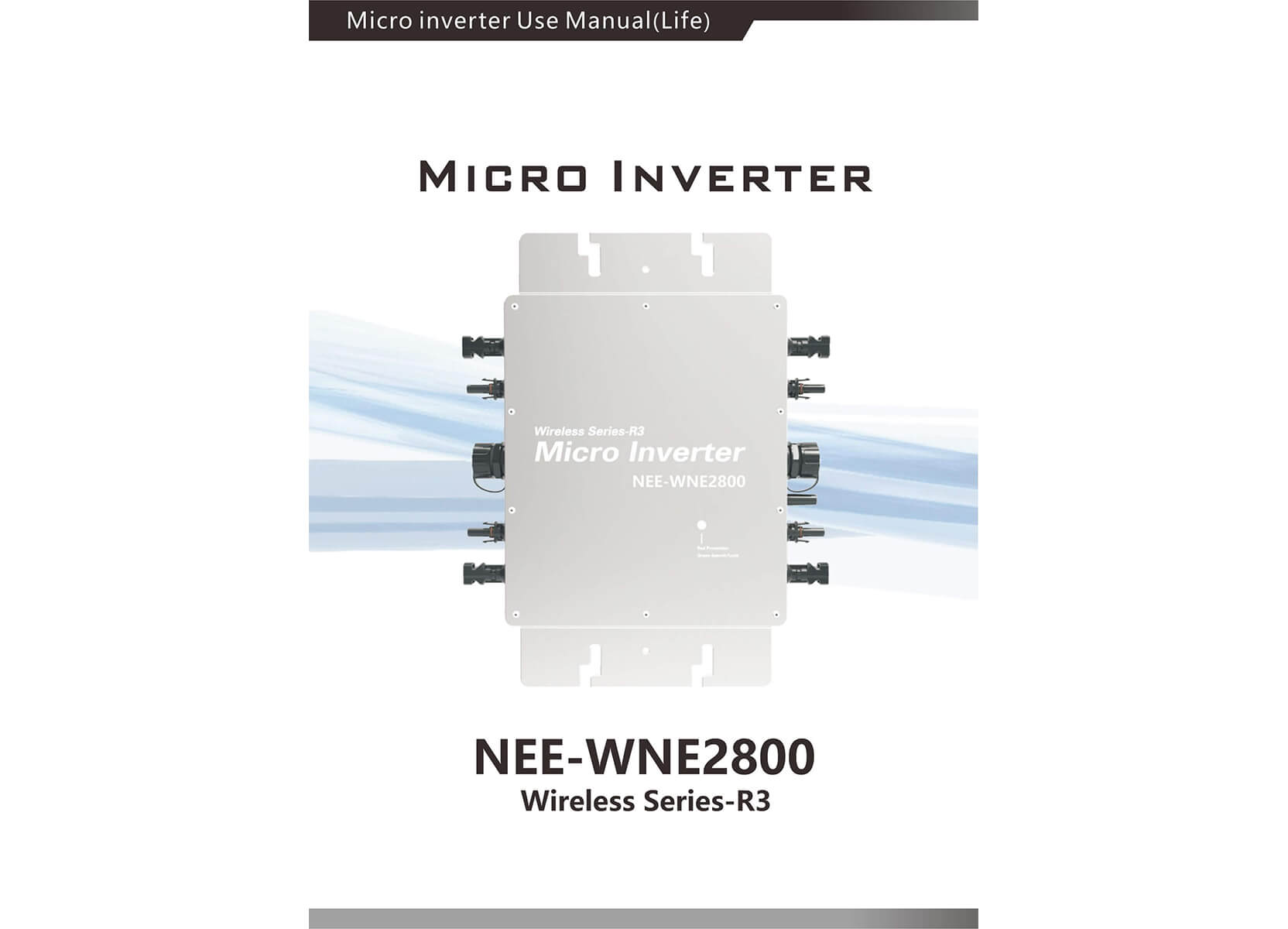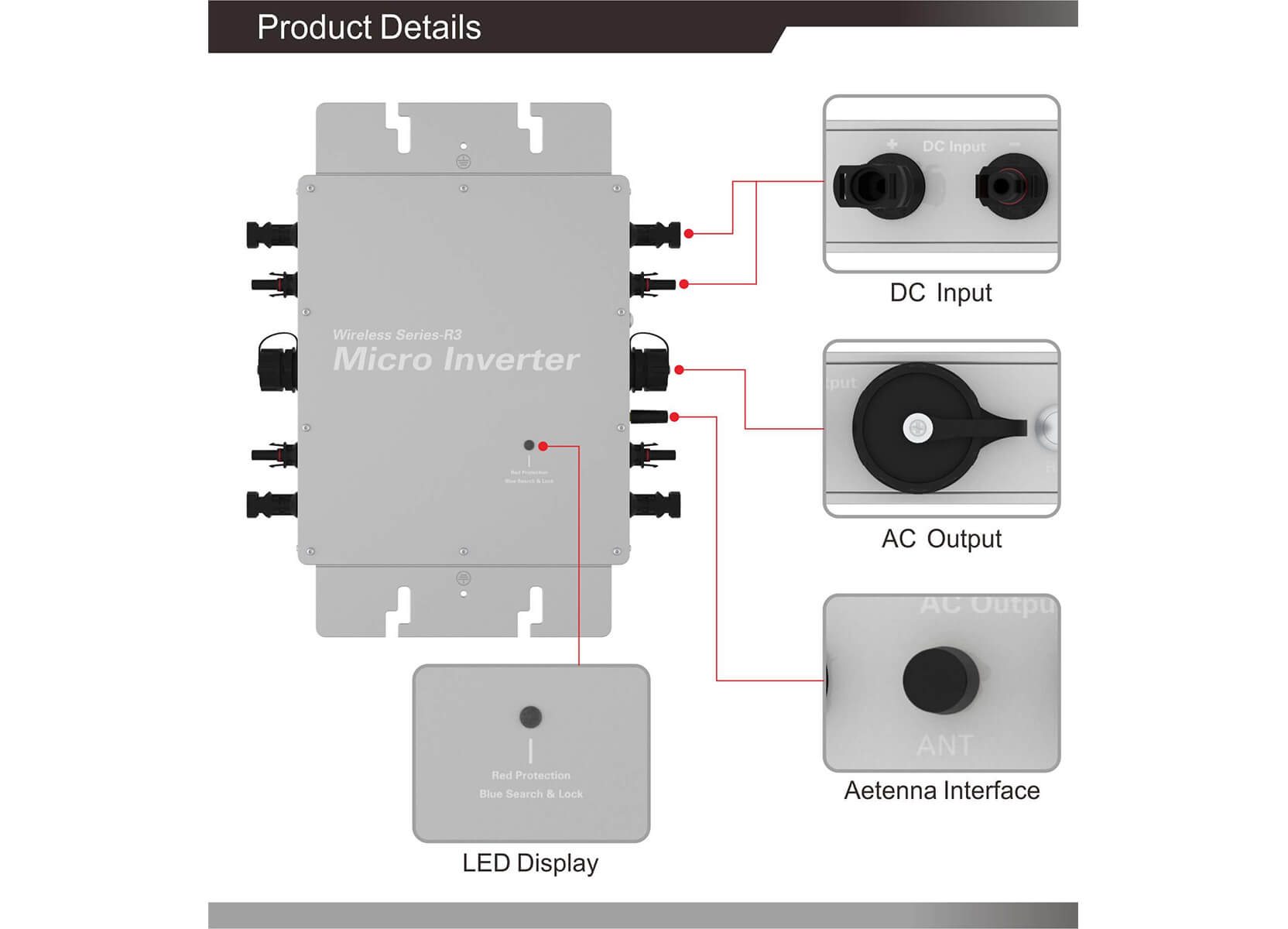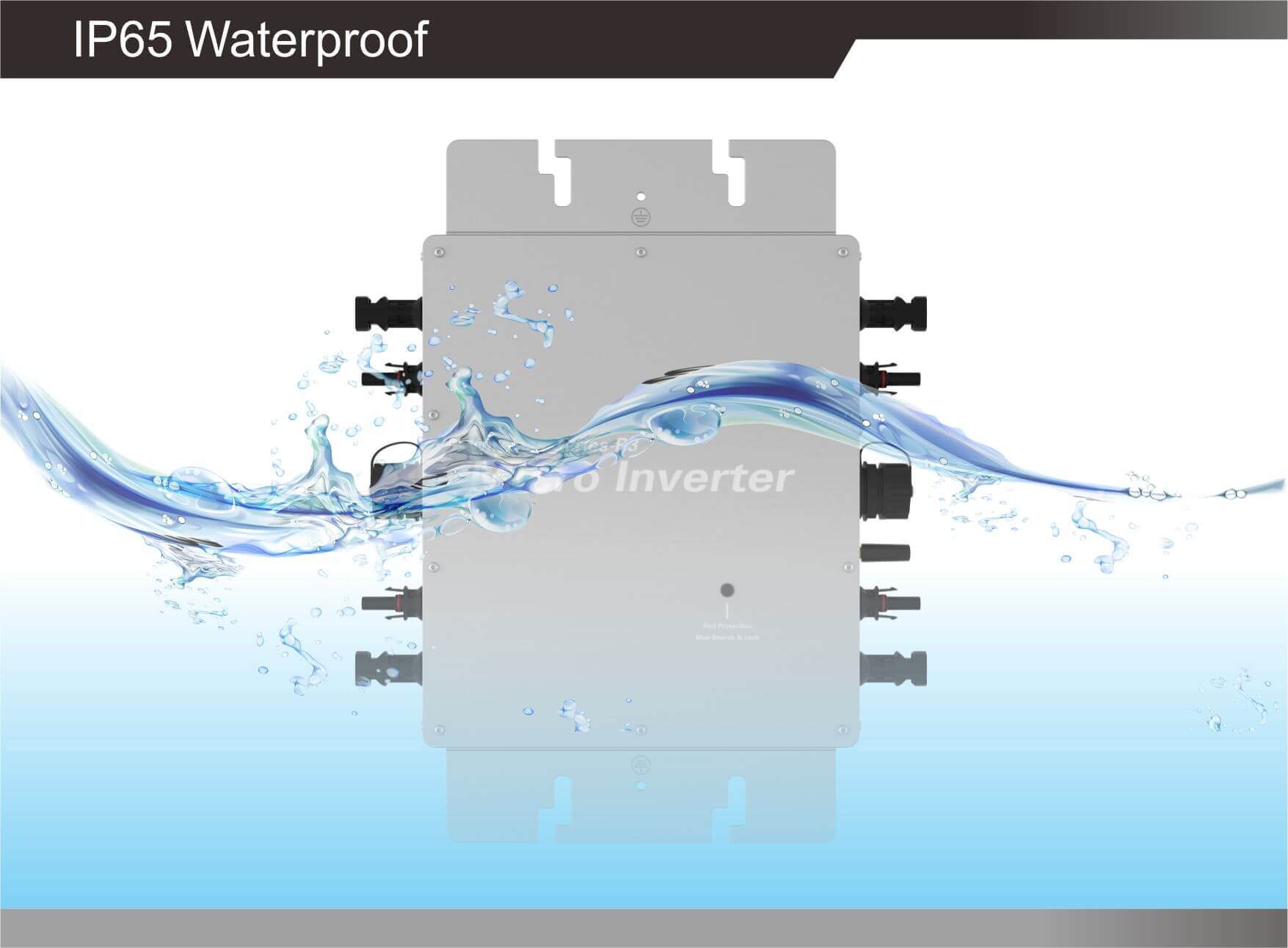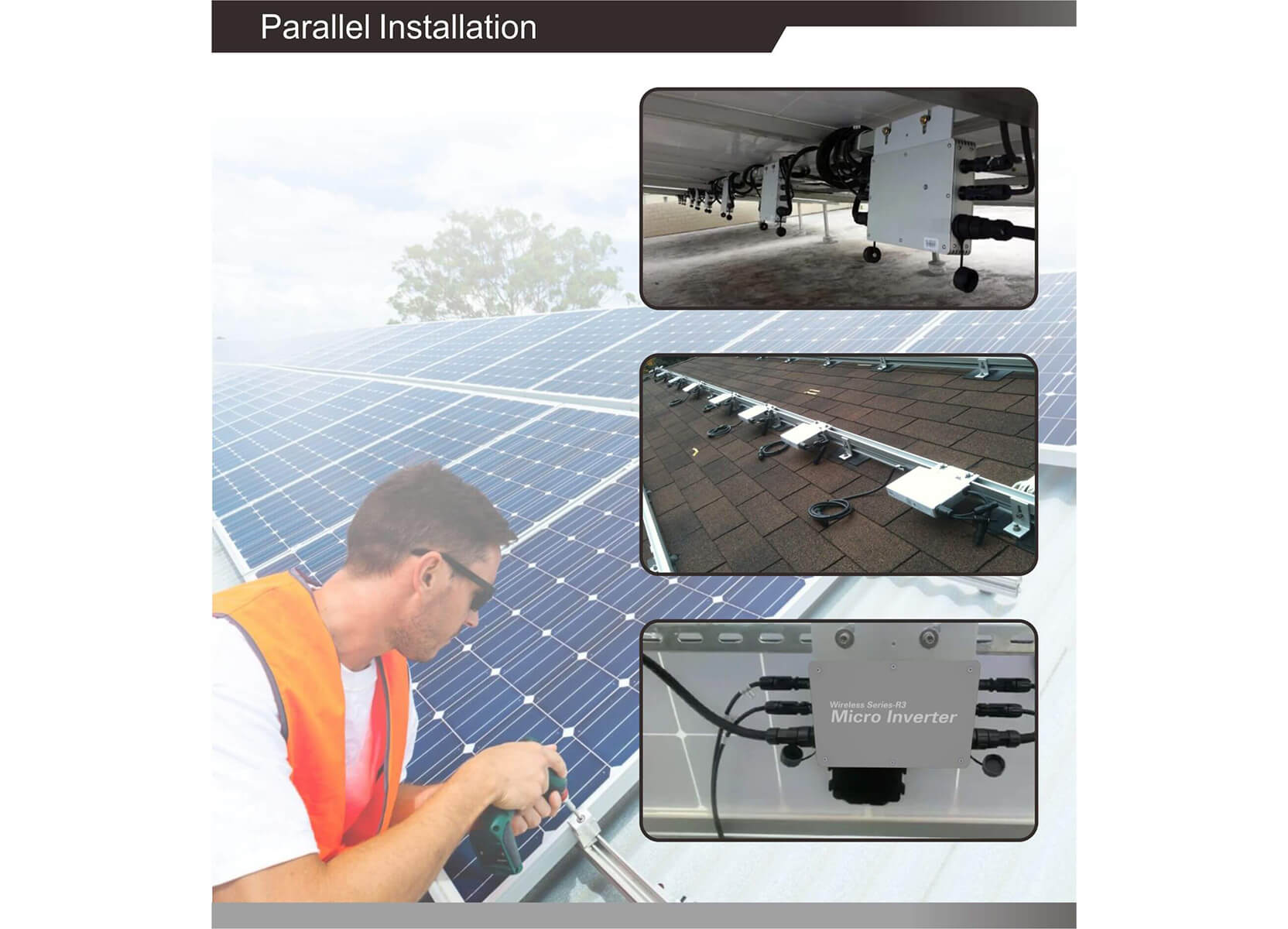
Micro Inverter Increased Efficiency and Output
- Individual Panel Optimization: Micro inverters are installed on each solar panel, allowing them to work independently. This means that if one panel is shaded or experiencing issues, it won't affect the overall output of the system. Micro inverters optimize the energy output of each panel, maximizing the total output of the system.
- Elimination of Power Losses: Traditional string inverters work by converting the DC power produced by multiple solar panels into AC power for the grid. However, this method results in power losses due to differences in panel performance and shading. Micro inverters eliminate these losses by converting the DC power produced by each panel into AC power.
- Improved Performance in Low-Light Conditions: Micro inverters are designed to operate in low-light conditions, meaning that they can still produce energy even when the sun is not at its peak. This can significantly increase the overall energy output of a system.
- Reduced Heat Buildup: Micro inverters are generally installed directly on the solar panel, which helps to reduce heat buildup. This can improve the efficiency and lifespan of the solar panel and the micro inverter.
- Real-Time Monitoring and Maintenance: Micro inverters are equipped with monitoring systems that allow homeowners and installers to track the performance of each panel in real-time. This means that any issues or malfunctions can be quickly identified and addressed, improving the overall efficiency and output of the system.

Micro Inverter Product Details
Micro Inverter Modular Design and Scalability
One of the key advantages of micro inverters is their modular design, which makes them highly scalable and flexible. With traditional string inverters, adding more solar panels to a system would require upgrading the entire inverter. However, with micro inverters, each panel operates independently, allowing for easy expansion of the system. This modular design means that homeowners and businesses can start with a smaller system and add more panels and micro inverters as needed. This allows for a more cost-effective approach to solar energy, as well as greater flexibility in system design.
Micro inverters are highly adaptable to different types of solar installations. They can be used with both rooftop and ground-mounted systems, as well as with systems that use different types of solar panels. This means that regardless of the size or configuration of a solar energy system, micro inverters can be easily integrated to improve efficiency and output. Furthermore, the modular design of micro inverters means that they can be installed in a variety of locations, allowing for greater flexibility in system design and placement. Whether it's a residential or commercial installation, micro inverters offer a highly scalable and adaptable solution for optimizing solar energy output.

IP65 Waterproof Micro Inverter
Micro Inverter Improved Monitoring and Maintenance
Micro inverters come equipped with advanced monitoring systems that enable real-time performance tracking of each individual panel in the solar energy system. This level of monitoring allows homeowners and businesses to identify and resolve any issues or malfunctions quickly, reducing the downtime of the system and maximizing energy output. In addition to real-time monitoring, many micro inverters also come with mobile applications that allow users to monitor their systems remotely. This feature enables users to keep an eye on their systems even when they are away from their homes or businesses, giving them peace of mind and control over their energy systems.
Micro inverters offer greater flexibility when it comes to maintenance and repair. Since each panel has its own micro inverter, if one panel or micro inverter experiences an issue, it can be easily replaced without affecting the rest of the system. This makes maintenance and repair much easier and cost-effective than with traditional string inverters, which require significant downtime and labor costs to repair or replace. Micro inverters also have longer lifespans than string inverters, reducing the need for frequent maintenance and replacement.
Improved monitoring and maintenance capabilities of micro inverters help to increase the overall lifespan of the solar energy system. By catching and resolving issues early on, homeowners and businesses can prevent damage and extend the life of their systems. Additionally, with real-time monitoring, users can identify areas of the system that may require additional maintenance or cleaning, such as panels that may be experiencing shading or dirt buildup. This proactive approach to maintenance can significantly increase the lifespan and efficiency of the solar energy system.

Micro Inverter Parallel Installation
Micro Inverter Grid Connectivity and Energy Storage
Micro inverters play an essential role in grid connectivity and energy storage for solar energy systems. With grid-tied systems, excess energy produced by the solar panels is sent back to the grid for use by other consumers. Micro inverters make this process more efficient by converting the DC power produced by each panel into AC power that can be used by the grid. Since each panel has its own micro inverter, the energy produced by each panel can be optimized and sent back to the grid, maximizing the overall output of the system.
Micro inverters make it easier to incorporate energy storage into solar energy systems. Energy storage systems allow homeowners and businesses to store excess energy produced by their solar panels for use later, such as during peak energy demand times or during power outages. With micro inverters, energy storage can be added to the system more easily, as each panel has its own micro inverter that can connect directly to the energy storage system. This modular design makes it simple to add or replace energy storage units, providing greater flexibility and adaptability to the system.
Micro inverters also play a vital role in grid stability and resilience. During times of high energy demand, such as heatwaves or severe weather events, the grid can become overloaded and unstable. Micro inverters can help to stabilize the grid by reducing the strain on the system through their ability to produce energy on a per-panel basis. This means that even if the grid is experiencing high demand or issues, the micro inverters can still produce energy and help to keep the system stable. Overall, the grid connectivity and energy storage capabilities of micro inverters make them an essential component of solar energy systems.









